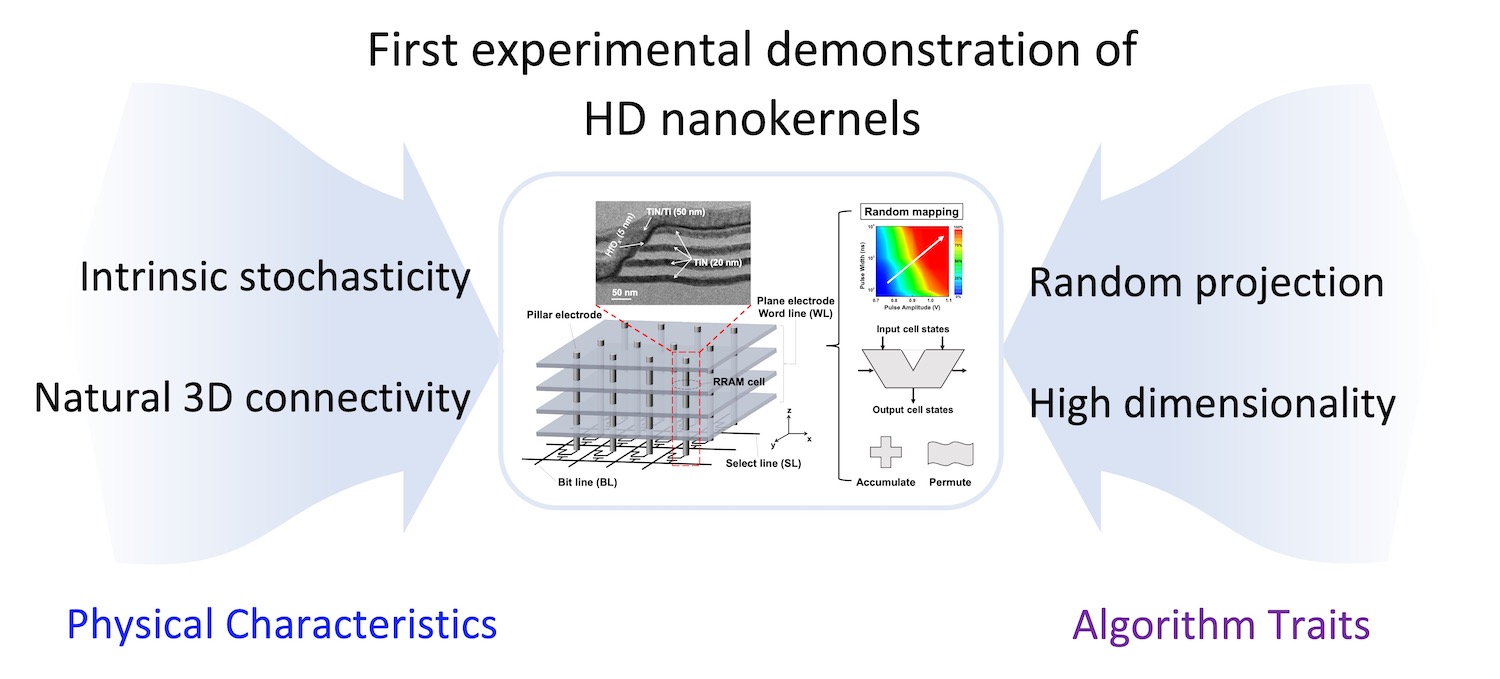Neuro-Symbolic Computing
Neuro-symbolic computing combines human-like symbolic reasoning with hierarchical, fast neural learning, promising more robust, efficient and scalable cognitive AI systems. We work on novel designs and hardware implementations for neuro-symbolic cognitive computing systems. We published one of the earliest hardware demonstrations for vector-symbolic architecture (VSA), also known as hyperdimensional (HD) computing, back in 2016–2018.

Hyperdimensional (HD) computing draws inspirations from how the human brain computes with patterns of neural activities in high-dimensional space, for energy-efficient, streamlined, life-long learning. HD computing provides a cognitive computational framework that can be applied to various domains of applications, such as language recognition, analogical reasoning, bio-signal processing, robotic vision and control, drug discovery, and so on. Multi-task learning can be also implemented within the HD computing framework. Information is represented and distributed in HD vectors as ultra-wide binary words (with thousands of bits). These HD vectors can then be mathematically manipulated to perform real-time cognitive operations in a streaming fashion with high energy efficiency and ultra-low training cost.

Our ongoing work explores:
- Neuro-symbolic architectures enabled by integrating HD computing and neural architectures, and efficient hardware realizations.
-
In-memory HD computing fabrics with nanoscale embedded memories (e.g., 3D RRAM, MRAM, FeFET).
From the algorithm perspective, HD computing embraces randomness and high dimensionality. From the hardware perspective, resistive memories built in a three-dimensional vertical structure possess intrinsic stochasticity and native 3D connectivity. The convergence of physical and algorithm characteristics leads to a natural hardware realization of 3D nano-kernels for HD computing, where the vertical integration and interplay of RRAM and silicon transistors collectively serve as the enabling factors. This is one of the earliest experimental demonstrations for HD computing.

The stochastic switching behaviors of RRAM are captured and characterized by a nonlinear voltage-time relationship in the sub-threshold regime from electrical measurements. Leveraging the intrinsic stochasticity, in situ random projection of HD vectors is realized. Reconfigurable logic immersed in memory, which capitalizes on the shared vertical pillar structure, native 3D connectivity, and non-volatility, is developed and validated by pulse measurements on 3D VRRAM. Furthermore, using these in-memory operation schemes as the primitives, full MAP kernels are then experimentally demonstrated within 3D VRRAMs with robust operations and immunity to D2D variations, eliminating the need of moving data out of high-density 3D memories. Algorithm-hardware co-design offers a knob for energy-accuracy trade-offs, and meanwhile, we show that memory-centric HD systems can be extremely resilient to hardware errors.
Related publications:
VLSI 2016, IEDM 2016, VLSI-TSA 2017, TCAS-I 2017, ISSCC 2018, JSSC 2018, SPIE Spintronics XII 2019